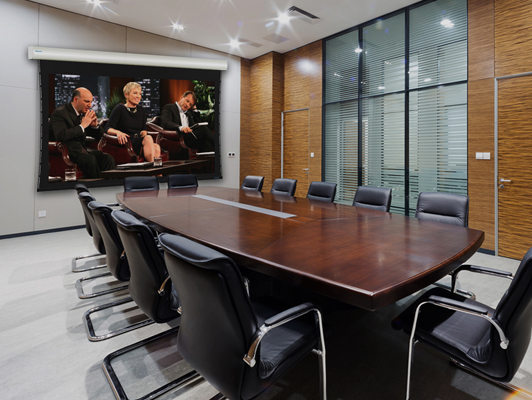From residential installations to the U.S.S. Stargazer set on Star Trek: Picard, projection screens have a variety of use cases. Whether it is a live event, immersive attraction, or home theater, having the right screen can enhance the experience for the viewer.
Projectors bring to life the vivid colors and imagery of content creators, but all can be lost without the screen that best suits the content. With considerations like the surface of the screen, projector size, or ambient light capabilities, it is imperative to make the “right” choice the first time.
Touching the Surface
Simply put, projection environments can vary widely. Aaron White, home theater and Pro AV sales lead at Severtson Screens, offered up a few questions that must be answered when considering the right screen for each installation.
[Large-Venue Projectors: Key Features for Presentations in Big Spaces]
“There are a lot of factors to consider,” he said. “Are there speakers behind the screen, so that you need an acoustically transparent material? What type of projector are you using: UST or standard front projection? Is there a lot of ambient light in the room or is it completely blacked out?”
Wendy Cox, director of product management at Da-Lite, a brand of Legrand|AV, said addressing these concerns is critical for any installation. “You are selecting a resolution technology from the projector and content,” she added. “So, if you don’t select the screen surface that matches the resolution and technology needs, you’re really missing out on optimizing the investment. It’s also a major part of the end user’s experience, because if you don’t pair the right screen surface and projector for the environment, it may result in a less-than-optimal image.”
"It can make or break the image quality, which anyone who has walked into a sports bar or house of worship with a projection screen may have experienced,” noted Ryan Gustafson, CEO of Screen Innovations (SI). “Ambient light rejecting [ALR] technologies, such as Screen Innovations’ Black Diamond and Slate screen optics, were developed to provide a viable option for environments plagued with ambient light.”
Light Management
As Gustafson explained, there are plenty of variables to consider when selecting a screen. Throw distance, viewing area, and projector mounting are all part of the equation. However, one key consideration that seems to be at the forefront is how well it rejects ambient light.
[SCN Hybrid World: 11 Speakerphones for Today's Workspace]
“Black Diamond is Screen Innovations’ most popular ambient light rejecting screen material, followed by Slate,” he added. “SI’s Unity screen material renders the highest color accuracy when used in dark environments. All of these options, with the exception of Black Diamond, are available with acoustic transparency.”
“Ambient light, natural or artificial, can come from any source in a room,” said Cox. ”In two-piece projection, the only light you want hitting the screen is from the projector. Screen surfaces featuring ambient light rejection properties can separate light in the environment from projected light. Ambient light that falls on a standard projection screen will compete with light from the projector and wash out image contrast, color saturation, and dynamic range, affecting the viewing experience.”
“Most screen surfaces don't reject ambient light as much as they do to compensate for it,” added White. “Many materials add back contrast that ambient light has lost. Other screen materials provide for better reflection of the primary light source [i.e., projector] rather than indirect light sources coming from other angles. A true ALR material generally has some type of layering or reflectors that redirect the unwanted light sources away from the screen while directing the projectors image back to the audience.”
Keeping those screens flat is also of utter importance. As White said, one of the benefits of a fixed-frame installation is it remains static and is not susceptible to creases.
For the smallest creases, bumps, or folds, you’d be surprised at some of the easiest tricks of the trade. “Using a blow dryer on the crease is an industry trick that solves a lot of shipping or installation mishaps,” Gustafson said.
Size Matters
Projection screens are used in many environments. A home theater, for example, will require drastically different dimensions than a commercial installation. “The general rule of thumb for 16:9 or 10:10 formats, in a commercial setting, is to figure the depth of room divided by two to achieve the ideal screen diagonal,” explained Cox.
“Screen size often has some personal preference and bias associated with it,” admitted White. “However, it can also be limited by the room size and projector specs; if the projector is placed a long distance from the screen, it may lose a lot of its light by not being bright enough or also be able to zoom to the desired size. Another major determining factor is seating distance. A rule of thumb is your seating distance should be about three times your screen's viewing height.”
[Epson Projectors, Strand Lighting Get Visitors In the Mood]
Which is more advantageous for your installation, fixed or motorized screens? “Fixed screens are more stable, delivering a more accurate installation of dimension and aspect ratio than motorized screens,” Gustafson offered. “Motorized screens are more flexible and prone to expand and contract in a 120-degree truck or attic. Although motorized screens are natively flat, they can move with air movement throughout the room. Still, they are a great choice where preserving the architectural and decorative integrity of a room is important or when a room serves multiple purposes.”
Luckily, finding the right screen size is relatively easy. Most companies offer online tools to get started, such as Da-Lite’s Screen Surface Selection Calculator and Screen Designer Tool and SI's Screen Material Wizard.
While there are many considerations, there are also a number of projection screens available. Here are some current offerings from several manufacturers.
Da-Lite Tensioned Advantage with SightLine
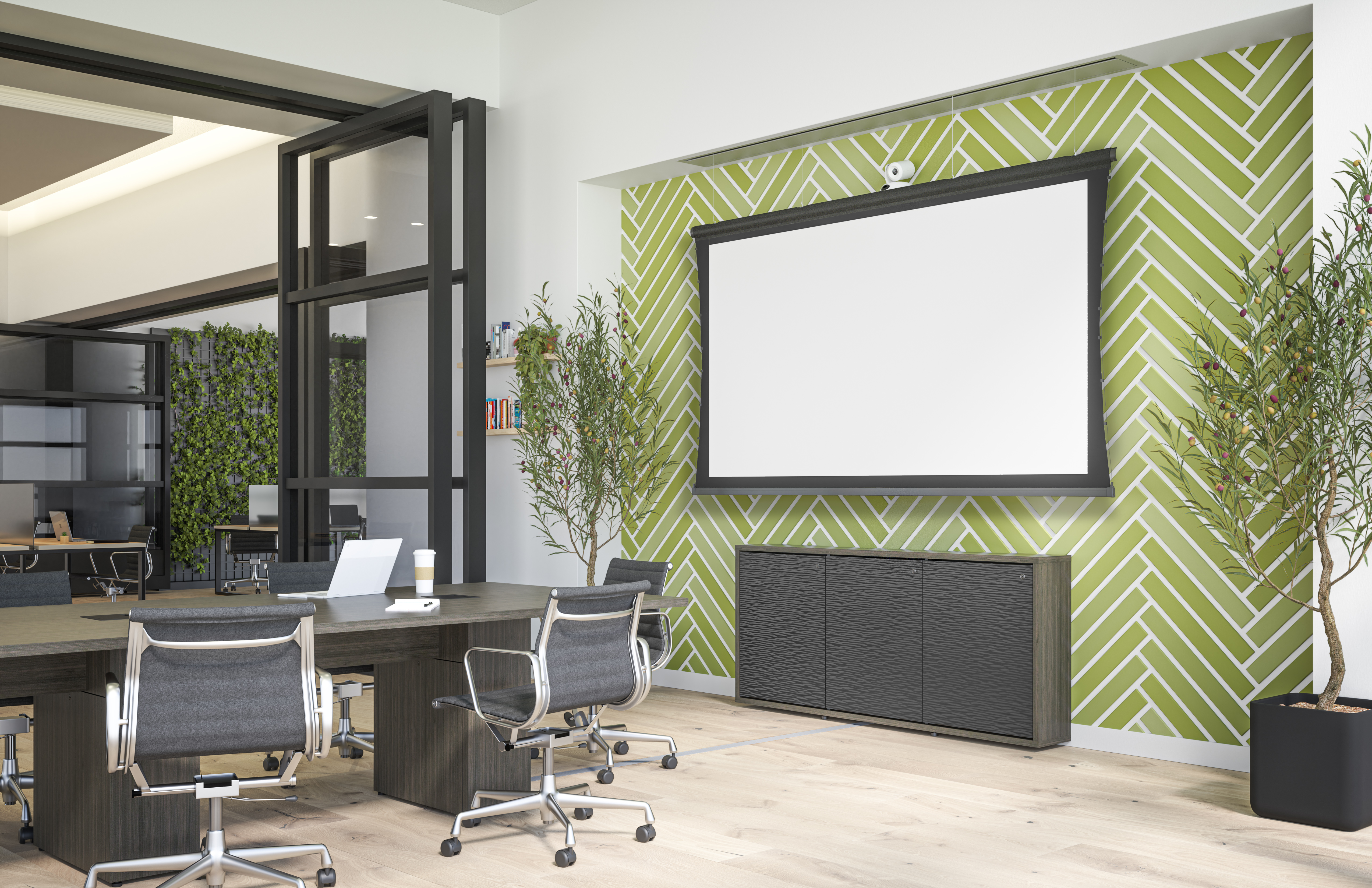
Da-Lite’s new cable drop feature, SightLine, available with the Tensioned Advantage electric screen, gives the impression of a floating screen. Available in sizes up to 177-inch diagonal (16:9) or 182-inch diagonal (16:10), it is a ceiling recessed electric screen designed with ceiling trim in place. This conceals the rough opening and eliminates the need to complete additional trim work once the screen is installed. Its two-stage installation option allows the screen case to be installed during the rough-in construction stage and the screen surface assembly during the finishing stage. Sliding installation brackets allow mounting flexibility for easy attachment of the screen housing to the structure above the drop ceiling.
Draper TecVision Series
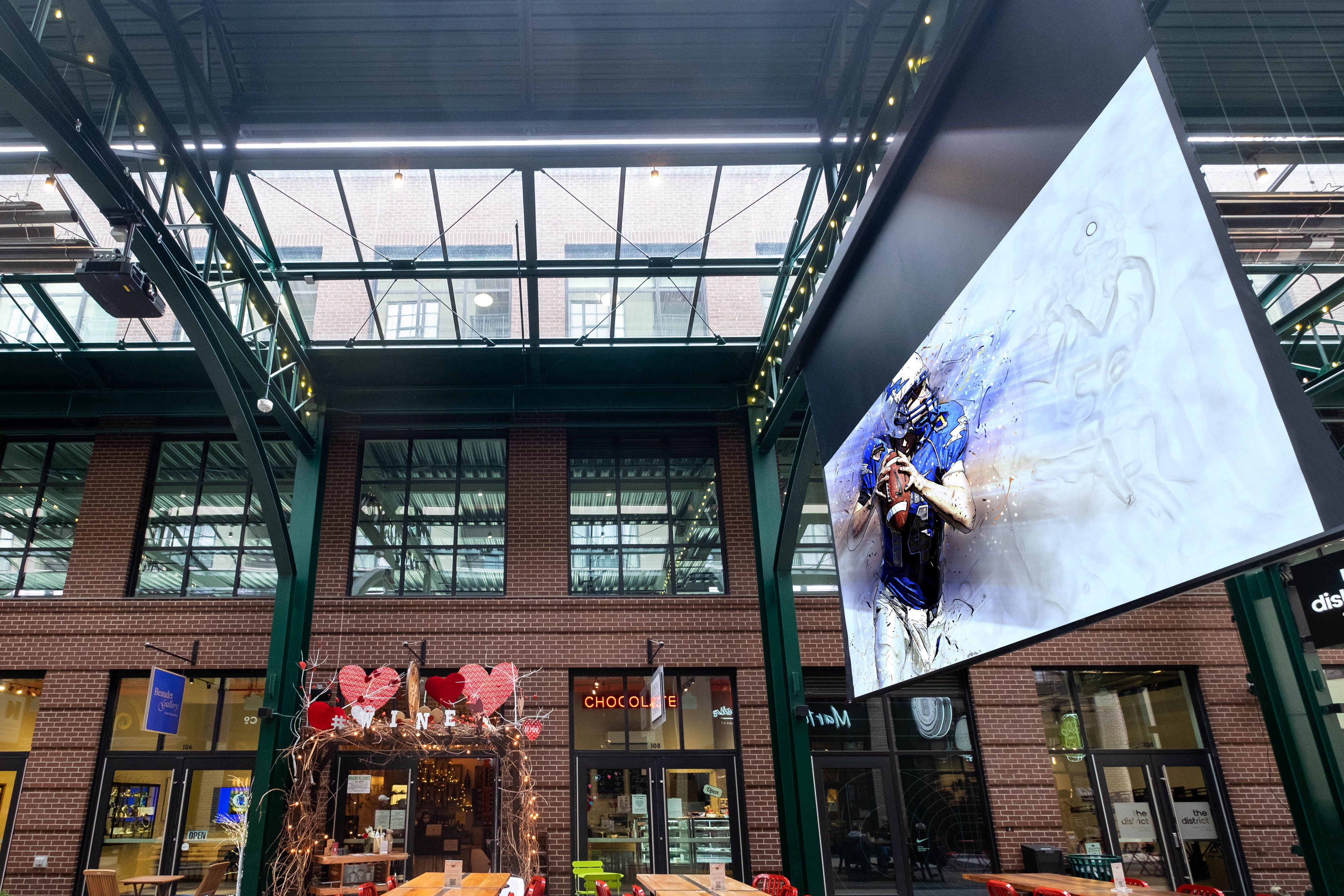
Draper offers 11 TecVision formulations to deal with any projection requirements, including five ALR formulations. Each TecVision surface is designed for uniform performance across the image and from screen to screen. Draper tests each formulation periodically to make sure it still performs within specs. This attention to detail allowed Draper to attain Imaging Science Foundation (ISF) certification for color accuracy for every TecVision formulation. Draper's optically seamless technology makes seams invisible on very large installations. TecVision surfaces are available with electric and rechargeable battery screens like the Acumen series, as well as fixed screens like the Profile+.
Elite ProAV Presenter Pro Riser CineGrey 4D
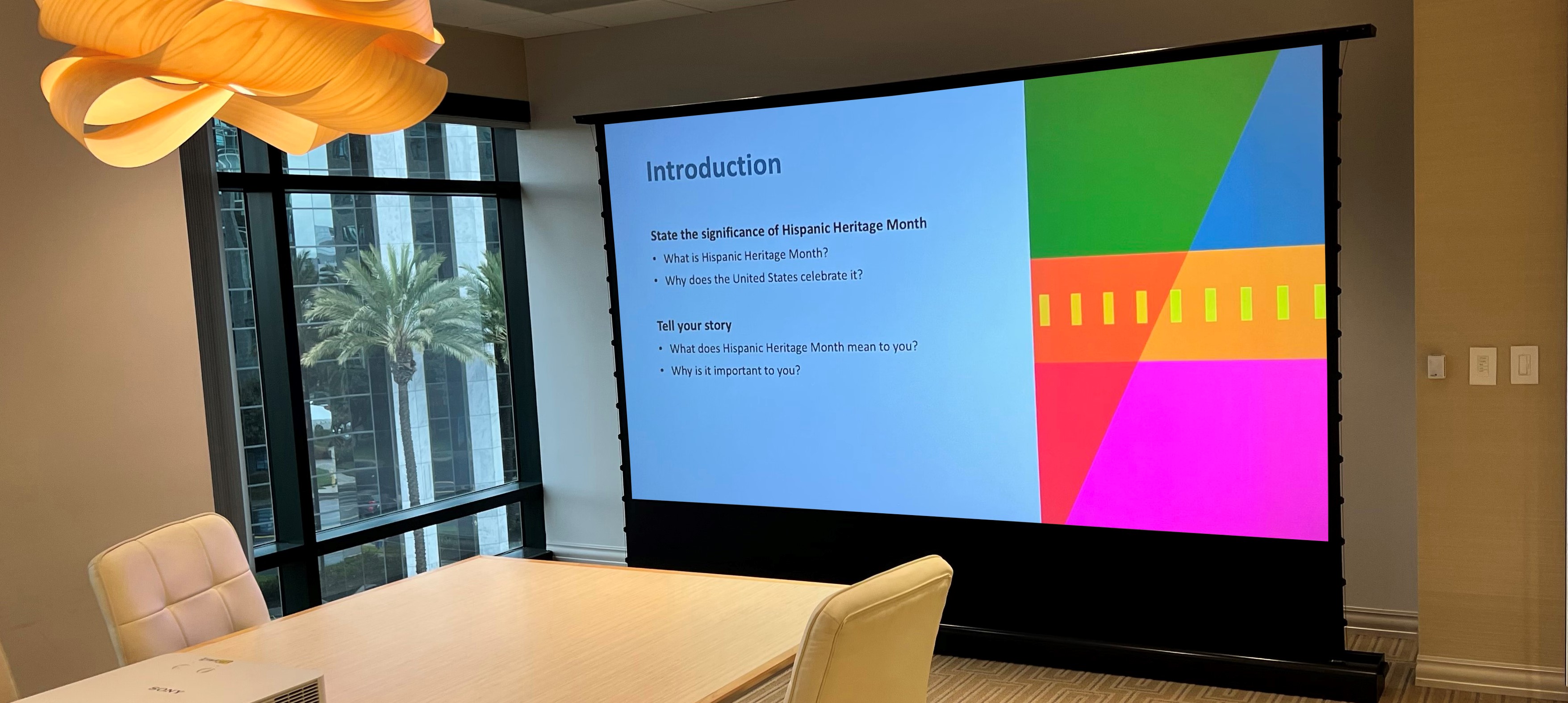
This portable, electric floor-rising projection screen with Ceiling Light Rejecting technology is designed for ambient light room environments. Its tab-tension design maintains a flat and taut front projection surface to provide a ripple-free image suitable for standard long-throw projectors. It’s ALR characteristics allow the Presenter Pro to be used in rooms with ambient light in lecture halls, boardrooms, training facilities, and other environments where lighting cannot be controlled. Using “scissor-backed” cross risers, the CineGrey 4D material rises and lowers easily.
EPV Twilight Series
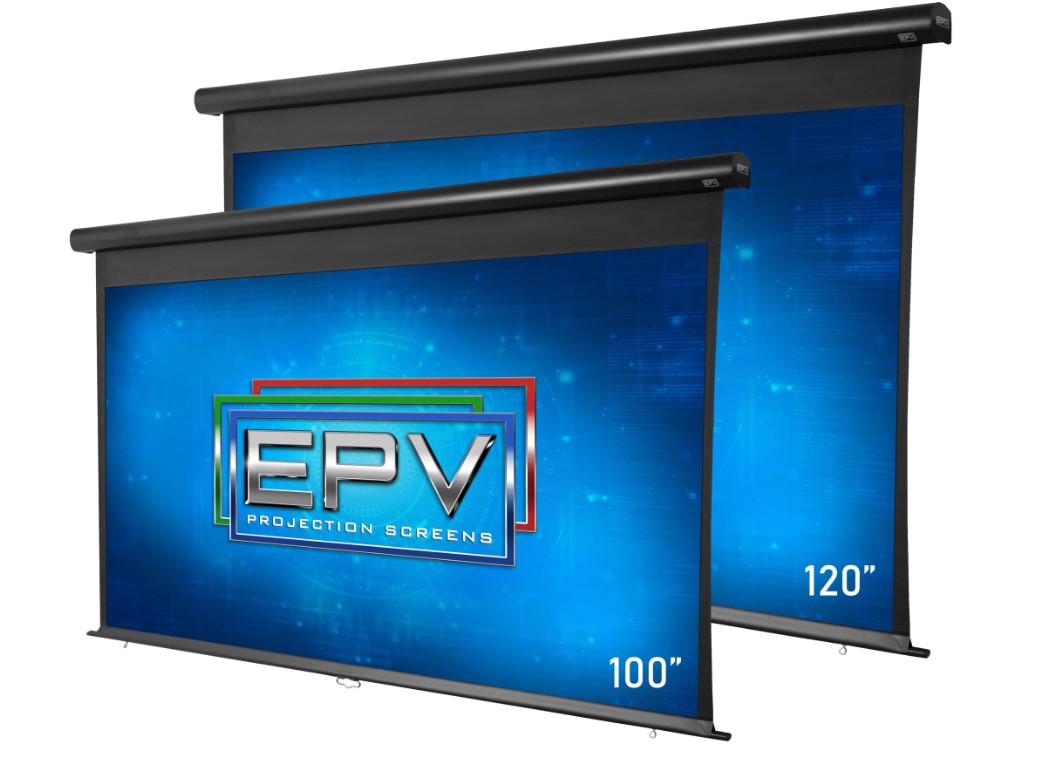
The new Twilight Series comes in a variety of sizes in Electric, Manual, and Tension Twin models. All three models are dedicated to outdoor spaces for nighttime use. The screen material is supported by a tab-tension system to provide a flat and taut projection surface for use with ultra, short, and standard throw projectors. Its wide viewing angle accommodates small gatherings or large-venue events.
Screen Innovations Black Diamond
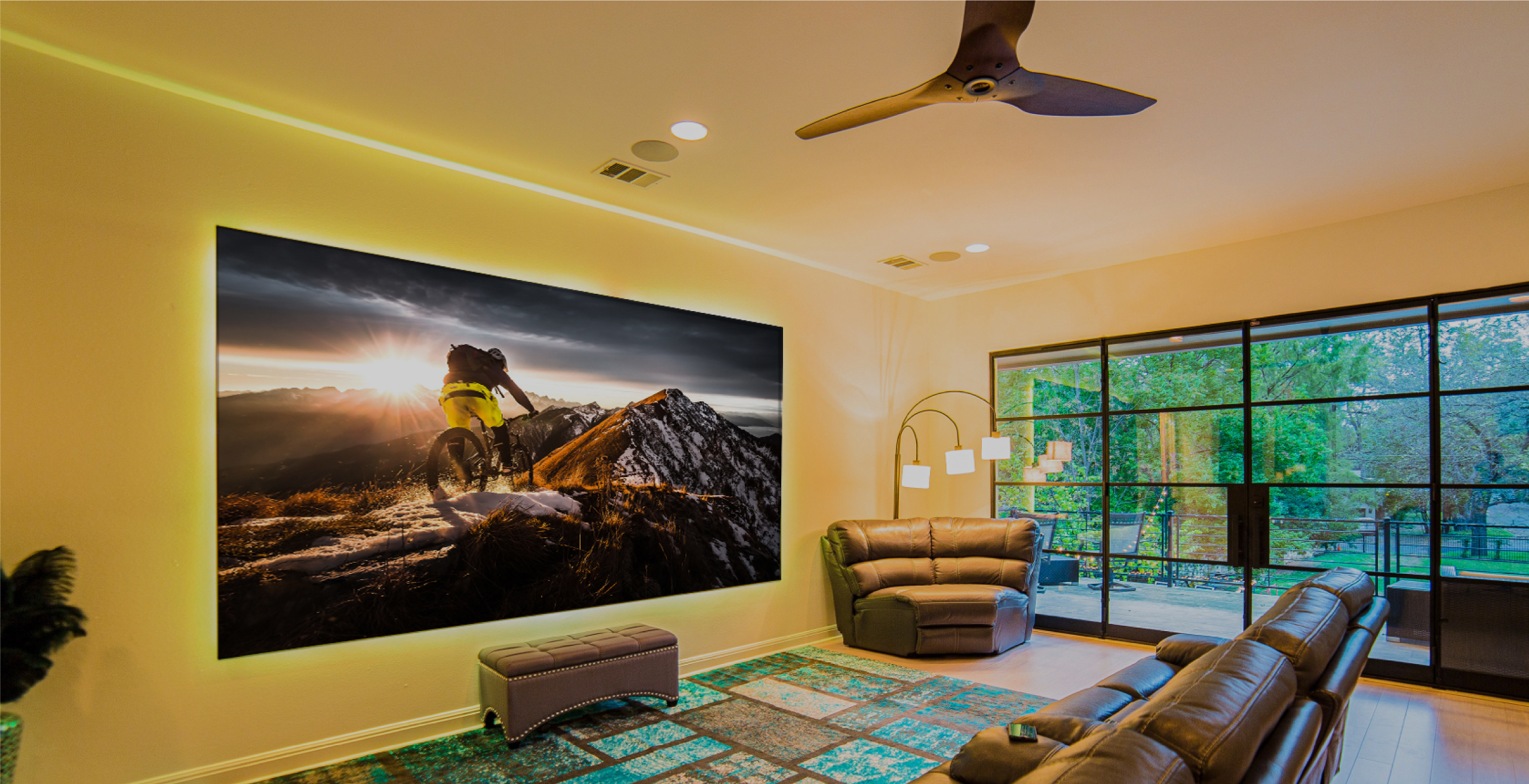
In 2008, Screen Innovations designed Black Diamond to solve the problem of washed-out projection screens in rooms with light. Black Diamond is capable of rejecting light on both the horizontal and vertical axis, so lighting from fixtures above and windows on the side is simultaneously rejected. The optics in Black Diamond result in an immersive dark room experience without the need for blacking out adjacent walls.
Severtson Screens Impression Series
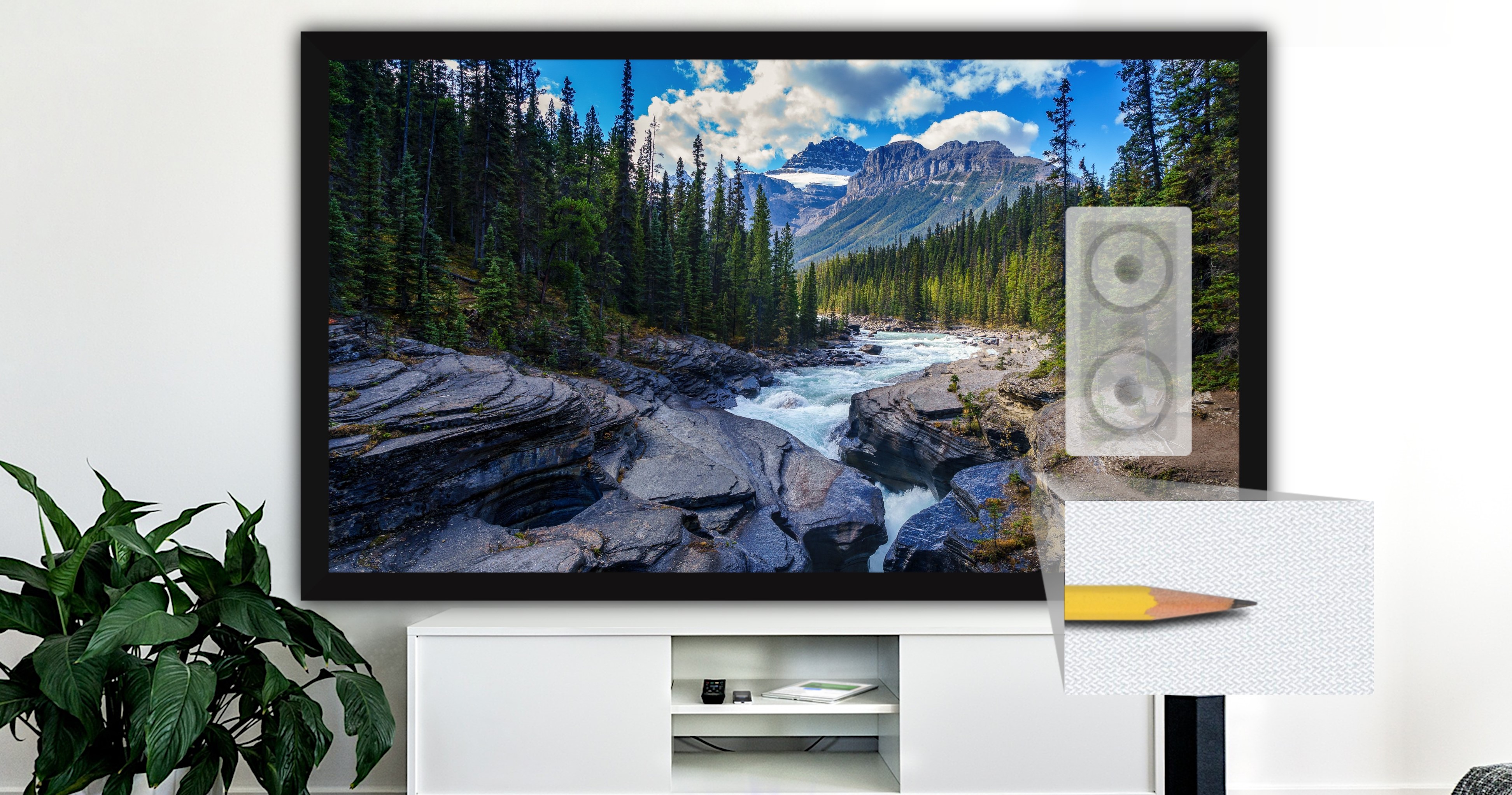
Severtson’s Impression Series fixed frames with SAT-4K screen material are designed for specialized applications where a permanent projection screen is desired. Made in the United States, the SAT-4K replicates the cinema experience in home and commercial settings. Acoustically transparent, the entire sound stage can be placed directly behind the screen at the same horizontal axis, allowing the vocals and the special effects to be completely in sync with the images on display. The SAT-4K screen meets or exceeds all industry standards for optimum video and acoustic performance.
Stewart Filmscreen Luxus
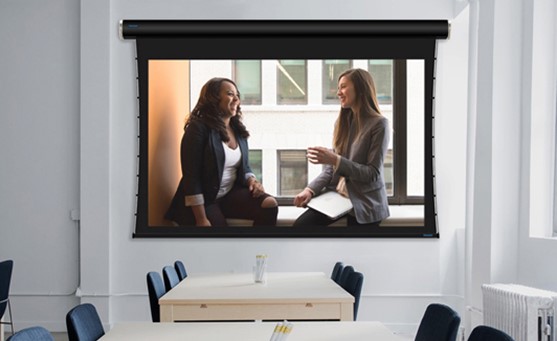
The 100-inch screen is a compact, below-ceiling retractable surface mount motorized screen for commercial and residential applications. With built-in controls and a removable case bonnet, the new Lexus is ideal for corporate, educational, gaming, and residential use. The Luxus is equipped with a universal hanging bracket, 12v trigger, and dry contact for easy control with optional IR or RS-232. The system supports image widths just over 15 feet and scales up to 209 inches in diagonal 16:9 format with a 12-inch backdrop.
